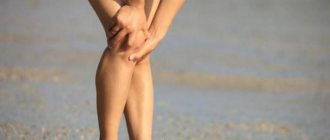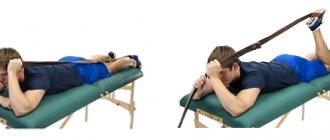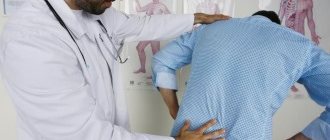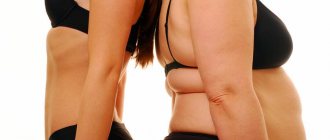If you regularly run or are just planning to start training, do not forget that intense exercise or unusual loads for the body can cause pain in the knee joints. Today we will figure out why your knees may hurt after running. Is this a sign of any disease? How can you deal with knee pain after running or during exercise? Is it possible to continue running if your knees hurt?
If your knees hurt after running: identifying causes and effective treatment methods
Running is a very popular sport. It is practiced by millions of people around the world, regardless of their professions and interests. Morning or evening jogging is a healthy, fashionable way to keep your body in good shape. But sometimes after running the knee hurts and causes a lot of inconvenience to a person. In order for this sport to be a joy and bring favorable emotions, you should understand why a joint may ache after a race and how to treat it. There is a high risk of injury when playing this sport. One wrong step can cause a sprain, dislocation or fall. Existing diseases and pathologies may also become aggravated or worsened. After all, diarthrosis, which is already under constant load, experiences even greater pressure. It is impossible to treat this “bell” from the body with disdain and it is worth understanding why pain occurs and how to deal with it.
Runner's Knee, Jumper's Knee, and Cyclist's Knee
“Runner's knee” is a collective term that covers a variety of conditions. This is not a medical diagnosis. Most often, runner's knee refers to patellofemoral syndrome. Runner's knee is also sometimes called IT Band syndrome or iliotibial tract syndrome.
Several other very common conditions that occur among runners are jumper's knee, or tendinitis of the patellar tendon, and cyclist's knee, or pes anserine tendonitis. It is these diseases that runners most often contact for pain in the knee joint.
Why do my joints bother me after jogging?
Often people who practice jogging wonder: why do their knees begin to cause discomfort only after exercise? After all, at any other time the joints behave differently - there is no pain and limited movement.
There can be many reasons for the occurrence of painful sensations. The very first of them is unfamiliarity with increased physical activity. When running, jumping and squatting, the joint is loaded much more noticeably than during normal walking. Excruciating discomfort can also appear after the ligaments are torn or stretched. This is accompanied by acute spasms, pain on palpation, local swelling and limited freedom of movement may be observed. Problems with ligaments can appear as a result of a sharp jump in the degree of load on the joint and due to various injuries. The next reason why an uncomfortable feeling appears in the limbs after a race may be a damaged meniscus. This cartilage is connected to other cartilaginous elements by ligaments. Sometimes, with a sudden unsuccessful movement, the fiber of the ligaments can tear and the meniscus is not able to function normally. There will be a sharp spasm, swelling, and the inability to lean on your leg. A common cause of pain is subluxation of the kneecap. The injury is not dangerous, but nevertheless unpleasant, typical specifically for runners. There are no special complications. But with repeated dislocations, the stability of the joint may be lost, and the patella will be injured again and again. And this can lead to the development of the so-called “runner’s knee”, when the tissues of the kneecap are destroyed under the influence of frequent “loosening”, a dull aching pain appears and the joint stops moving normally. With this syndrome, discomfort becomes commonplace. Important: if the blood supply is impaired and diarthrosis does not receive proper nutrition, this may be the cause of pain after jogging. Adolescent children are susceptible to this, when the vascular system does not have time to grow at the same pace as the bones and the blood supply to the bone tissues occurs intermittently. The unpleasant sensations that appear in this case usually do not have a clear location; the knee joint can hurt randomly, and they go away on their own, without taking medications. Or vascular pain can appear in people with a problematic circulatory system, when the patency of blood vessels is impaired and the blood supplies the tissues unstably. We can also talk about the presence of pathological processes: the development of rheumatism, arthritis, bursitis, arthrosis, synovitis and other joint diseases. Inconvenience in the knees during a race can also be a consequence of the incorrect progression of the components of diarthrosis, which occurs when moving on uneven ground, the wrong method of jogging, flat feet, bad shoes or unheated muscles. Important: If a runner moves over uneven terrain, the joints may distribute tension incorrectly, which can result in permanent damage and microtrauma that can develop into inflammation of the knees.
When the wrong technique is chosen (if a person runs with an emphasis on the heel or twists the feet, or holds the torso incorrectly), the body can also respond with pain. The load increases, and normal depreciation does not occur, but the tissues of the joints are compressed and, as a result, the person feels discomfort. If a runner has flat feet, the foot does not spring well and the knee joint is overloaded.
When shoes are incorrectly or poorly selected or laced, the foot is not fixed in the desired position, the joint does not function correctly and can be injured and painful. And, last but not least, you need a full warm-up before classes. The muscles must be warmed up and prepared for stress, otherwise they develop unevenly and direct the skeleton incorrectly. When pain is caused by incorrect position or movement of bone tissue, this can lead to the onset of inflammation, chronic meniscus injury, ruptures or sprains.
What mistakes lead to knee pain?
The first mistake is running in the wrong shoes. A fairly common situation: a person who runs goes on vacation, to the country or somewhere else and goes for a run in what he has - sandals or something else completely inappropriate.
The second point is an incorrectly selected load plan. People, for example, prepare for competitions according to a training plan, but violate it with some unplanned races.
For example, you are preparing for a marathon, there is a certain weekly volume; it is carried out and, for example, from above a person participates in “Running Hearts”. It would seem, why not run 10 km? But it turns out that people completely fulfill the volume of their training plan and add 10–15–20 km of additional races on top, which in the end become redundant. It turns out “overuse”.
The next mistake is insufficient recovery. Amateurs are especially guilty of this. Professionals all warm up very well, knead, stretch, and go for massages.
Non-professionals like to run and do not like recovery activities: stretching, foam rolling, massage, recovery swimming. Thus, the muscles remain clogged longer, and in this state they are more susceptible to injury.
When is pain after running normal?
After a variety of sports activities, so-called “normal” soreness may appear in the knees. It occurs as a reaction to changes in bone and joint tissues, muscles and tendons. There is no need to worry if:
1. The discomfort is not severe and lasts a short period of time. Usually the muscles of the thighs and ankles are also bothered. This is the same “soreness” that occurs due to the production of lactic acid in the tissues. Such pain goes away in a maximum of 3-4 days or less, depending on the degree of training of the runner: the more athletic he is, the weaker the soreness manifests itself and the faster it goes away.
2. Rapidly passing aching pain without a specific localization. It is felt when pressed, does not have a specific point.
However, this only applies to pain that is not intense and passes quickly, as well as pain in beginners in sports - muscles and diarthrosis, out of habit, always ache after training.
Determining the cause of a painful spasm by its location
Different diseases cause discomfort in different parts of the leg.
- If after running the knee hurts on the outside
, this may indicate damage to the meniscus or collateral ligament or incorrect placement of the limb due to lower back disease. - If your knees hurt on the inside after running
, this may indicate a pathology, problems with the veins, or a complication in the form of a Baker's cyst.
Baker's cyst is a serious disease that requires the intervention of an orthopedic doctor
, in which excess fluid accumulates in the joint capsule. Untimely treatment or rupture of a cyst can result in unpleasant consequences and even purulent processes in the tissues or lateral ligament. - Why do your legs hurt below the knees after running?
Discomfort in this part will be felt with inflammation of the tendons, atherosclerosis, thrombosis, arthritis and arthrosis, periostopathy and poliomyelitis. Between the knee and heel is a part called the tibia, consisting of two tibia bones and three muscle groups. Sometimes the lower leg may feel discomfort after a long break from training. Muscles that are unaccustomed to stress respond with aching, painful sensations due to the accumulation of lactic acid. With ruptures and sprains of the ligaments, pain in the lower leg will also be felt. And, naturally, the lower leg will hurt if there is a crack or fracture of the bone.
How to relieve pain when running
If you figure out why your knees hurt while running, you can relieve the pain syndrome in time. But what to do if the pain has already occurred? First of all, eliminate the main source of pain - the running exercise itself. In the future, use the correct shoes and knee brace. A knee brace, together with painkillers, will relieve you of pain in the knee joint in the short term. However, remember that the device greatly limits the range of movement: it is unlikely that you will be able to achieve maximum speed while running.
Important: if you suffer from pain while running, we strongly advise against using painkillers. The exception is a situation where knee pain strikes you right during the competition.
Preventing knee pain when running
To avoid unpleasant pain after your favorite run, you should adhere to a number of rules:
- Run only on level ground
. You can also run on asphalt, but this is less preferable. But running on paving stones is not recommended at all; - Choose suitable shoes
that will tightly “envelop” and carefully fix your foot. Sneakers with a rigid back, shock-absorbing inserts and a flexible toe are suitable. The thickness of the sole should be the same over its entire surface. The shoes are not laced tightly, but the foot should not “walk” in the sneaker; - Run with proper technique
. You cannot direct all the tension of the step to the heel; you should place your foot straight or with support on its front part; a smooth roll is made from heel to toe. The supporting leg should be slightly bent at the knee so as not to overload the joint. Your arms should be bent at 90 degrees, with your fists raised above your chest. You should run silently and easily; - The duration and intensity of the workout
must be planned so that the difficulty increases gradually. You cannot immediately run continuously for half an hour if the person has not previously exercised at all. This approach will only do harm; - Before jogging, there must
be a warm-up for all muscle groups.
Active running loads can lead to knee injury, even if all the rules are followed. In this case, you need to see a doctor who can determine the cause of the pain and prescribe the appropriate course of treatment and supportive procedures.
What can happen if you run incorrectly?
- Arthritis of the knee joint - from frequent strong impacts of the heel on the asphalt.
- Exacerbation of a disc herniation is also caused by impacts that are transmitted through the legs to the spine.
- Foot injuries - if you run for a long time on a hard surface without shock-absorbing sneakers.
- Neuroma is a painful thickening of the nerve on the sole of the foot that is difficult to treat.
- Runner's toe - injuries to the toes caused by too narrow shoes when hitting the asphalt. The nail may turn black and cause severe pain.
Traditional medicine against knee pain
Traditional methods of treating knees can be either an independent means of overcoming pain or one of the components of complex treatment. The easiest way to treat a knee is to use all kinds of compresses: 1. Mix chestnut, lilac and dandelion flowers in equal parts and compact tightly into a jar, then pour in vodka and keep in a dark place for 14 days. Soak a gauze cloth with the prepared tincture and wrap it around the disturbing part of the leg overnight. After just two or three times, such a compress will significantly relieve pain. 2. Yellow clay masks have proven themselves well. Yellow clay is mixed with water to a thick paste and applied to the sore spot under a film and a warm bandage. This compress is also kept overnight. The course should be at least 7 procedures, after which it can be done twice a week as a preventive measure. Another popular method of treatment at home is all kinds of ointments prepared with your own hands based on such active ingredients as: mumiyo, honey, celandine, St. John's wort, mustard powder.
When the body responds with unpleasant sensations when playing sports, this is a motivating signal to make changes to your workouts, reduce their intensity or give the body a period of rest. Loads during exercise must be adequate and consistent with the capabilities, health and physical fitness of the person. You need to pay attention to the correct jogging technique and the position of your legs during it. You should only run in comfortable, suitable special shoes. Under no circumstances should you run in sneakers or, especially, in completely non-athletic shoes. The foot in the sneaker should be well fixed, the sneaker should fit “like a glove,” but at the same time the foot should feel natural. If knee pain does not go away within three days after the race, you need to consult a doctor and describe to him the whole picture: when the injury was received, what the nature of the sensations was, what treatment has already been carried out, etc. Perhaps spasms are an indicator of the onset of joint disease. Treatment at its early stage will be much simpler and more effective than in an advanced situation. Self-medication for an injured knee can not only not help, but also cause harm and delay the start of treatment, thereby delaying recovery and reducing a favorable prognosis.
. After completion of treatment and complete restoration of the joint, it is possible to return to training with the permission of your attending physician, starting with minimal loads and gradually carefully increasing them to the desired level.
Sports nutrition for healthy joints and ligaments
An additional measure to maintain the health of joints and ligaments is to take special supplements - chondoprotectors. Most often they contain chondroitin sulfate, glucosamine sulfate, collagen, hyaluronic acid and calcium. Supplements can be multi-component or contain only one active ingredient. Taking chondoprotectors helps restore damage to cartilage surfaces and strengthen the joint. Let's take a closer look at the most popular additives.
Chondroitin sulfate
Chondroitin plays a major role in the full functioning of the joint. This is a polysaccharide found in cartilage, responsible for building bone tissue and lubricating the joint. It has anti-inflammatory properties. Taking chondroitin accelerates the absorption of calcium and phosphorus, suppresses the action of enzymes that destroy cartilage tissue and increases joint mobility. The daily intake is no more than 1200 mg. It is best taken in combination with glucosamine.
Glucosamine
It is an amino sugar in chondroitin and is obtained from the hard body covering of insects and shellfish - chitin. In the human body, it is produced by the cartilage tissue of the joints. Numerous studies confirm that long-term use of glucosamine slows down the development of joint diseases and significantly reduces pain. The supplement is available in the form of powder and capsules, the recommended dose is from 1500 to 2000 mg per day.
MSM (methylsulfonylmethane)
MSM is widely used as an anti-inflammatory agent, in particular for diseases of the joints and ligaments. The additive serves as a source of sulfur, which is involved in the formation of new tissues. It has a beneficial effect on the condition of the ligamentous apparatus by accelerating the flow of nutrients into cell membranes. MSM also has an antioxidant effect, slowing down aging and strengthening the body's protective functions. Most often it is used in conjunction with chondroitin and glucosamine to obtain a more pronounced result.
We recommend taking glucosamine, chondroitin and MSM together. Both during physical activity and during breaks, to support recovery processes.
Collagen
This is a protein that serves as the basis of the connective tissues of the human body; it consists of many fibrils. Collagen is responsible for skin elasticity, ligament elasticity and joint mobility. Thanks to these properties, it is actively used to restore cartilage tissue and synovial fluid.
The most easily digestible form is collagen hydrolyzate. In the Prime Kraft online store you can choose from four bright flavors. By the way, pomegranate extract also has a positive effect on the condition of joints and signs of aging in the body as a whole.
Using the promotional code BLOG in the official online store
primekraft.ru there is a 10% discount on the entire range! Delivery throughout Russia.
These supplements have a cumulative effect and require long-term use, so you should not expect noticeable results after 1 week or even a month. This is due to the fact that the joints do not have their own blood supply and it takes a lot of time for nutrients to enter the joint cavity. Playing sports and any other physical activity accelerates the effect.










